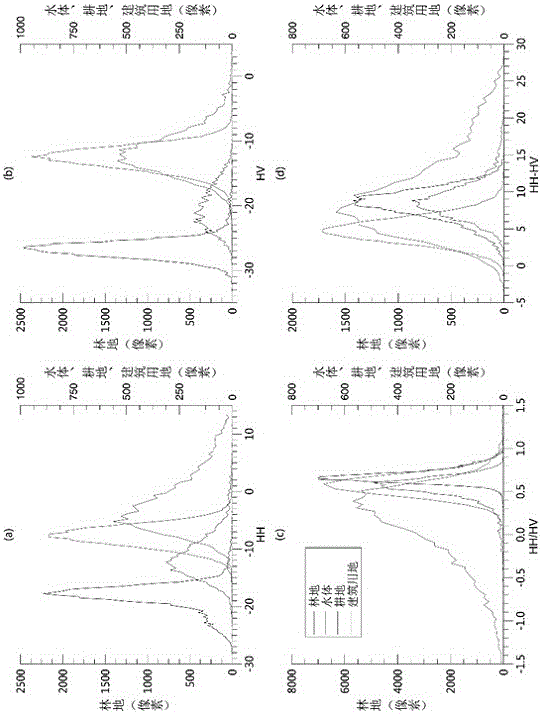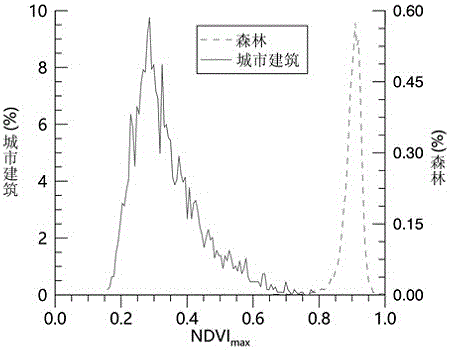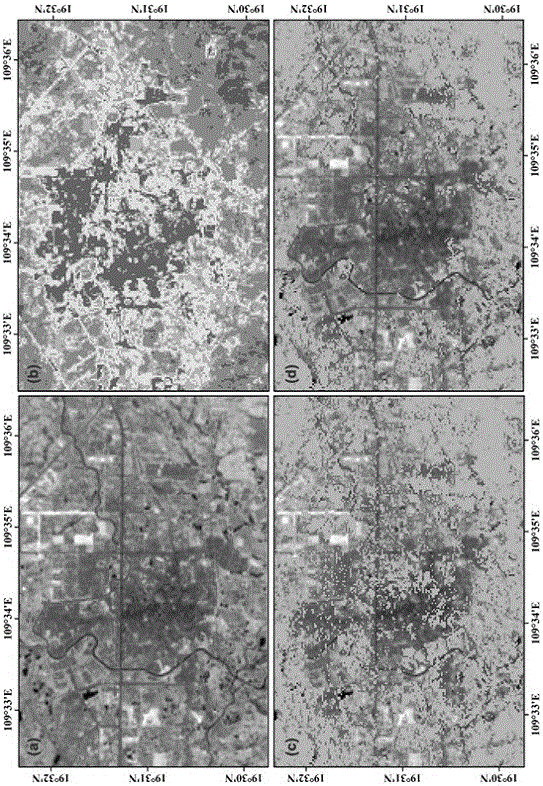Method for eliminating city building pixels in forest classification result based on PALSAR radar image
A radar image and classification result technology, applied in image enhancement, image data processing, instruments, etc., can solve problems such as misclassification of buildings, reduce overall classification accuracy, and achieve the effect of improving accuracy
- Summary
- Abstract
- Description
- Claims
- Application Information
AI Technical Summary
Problems solved by technology
Method used
Image
Examples
Embodiment 1
[0023] Example 1: Experimental content and conditions: 1. The 2010 PALSAR mosaic product in Danzhou, Hainan Province, the spatial resolution is 25 meters, and the DN value of the converted image is normalized radar cross-section backscatter data (sigmanaught). Forest classification is implemented using decision tree classification method.
[0024] 2. A total of 39 scenes of LandsatTM / ETM+L1T data (strip number 124 / 046) from 2009 to 2010, including 18 scenes of TM and 21 scenes of ETM+, with a spatial resolution of 30 meters. Use Fmask for automatic cloud removal, LEDAPS for atmospheric correction, IDL programming to achieve NDVI maximum synthesis, and draw NDVI histograms of forest and building samples as shown figure 2 shown. Filter the PALSAR forest with the 95% quantile of building pixels 0.65 (rounded) as the boundary value.
[0025] 3. The experimental results are as follows: image 3 (Schematic diagram of PALSAR forest classification results corrected by NDVI combine...
PUM
 Login to View More
Login to View More Abstract
Description
Claims
Application Information
 Login to View More
Login to View More - R&D
- Intellectual Property
- Life Sciences
- Materials
- Tech Scout
- Unparalleled Data Quality
- Higher Quality Content
- 60% Fewer Hallucinations
Browse by: Latest US Patents, China's latest patents, Technical Efficacy Thesaurus, Application Domain, Technology Topic, Popular Technical Reports.
© 2025 PatSnap. All rights reserved.Legal|Privacy policy|Modern Slavery Act Transparency Statement|Sitemap|About US| Contact US: help@patsnap.com



